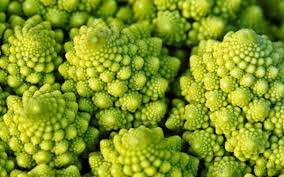The scientific name of Salacia reticulate is Salacia reticulate. It is an inherit flowering plant of the genus salacia. It is often cultivated in the dry zone forests of Sri Lanka and Southern region of India. The Salacia reticulate belongs to the family Hippocrataceae/Celastraceae. Salacia reticulate is a scandent or sarmentosa shrub or a small tree. Usually, leaves of Salacia reticulate are petioled, coriaceous and opposite.
The flowers of Salacia reticulate are small, axillary and extra – axillary, cymose or facicled and hardly solitary. They are followed by an edible and baccate fruit which is one to three celled having one to four seeded. The pulp of Salacia reticulate is mucilaginous. It is known that the seeds of Salacia reticulate are angular with thick testa, cotyledons and conferruminate. In the Ayurvedic medicine, the roots and aerial parts of the Salacia reticulate are used as home remedies. Also, this plant is used in the traditional Indian and Unani medicine.
This reticulate bears drupe as a fruit which has a tubercular and globose shape which becomes pinkish to orange when it is ripened. If you have never used this reticulate before, then ask your doctor if it suitable for you.
Health benefits of Salacia reticulate
Contents

Anti – proliferative activity
It is known fact that the leaves of the Salacia reticulate have anti – proliferative activity in interleukin – 1 activated cells. It is shown that an extract of 850 nanogram/ml have 50% inhibition in synoviocyte like cell lines and it can restrain the matrix metalloproteinaise genes. In many studies are shown this have anti – proliferative activity so before you use it, you need to talk with your doctor about the best dosage.
Prevents fat absorption
We know that the lipase is an enzyme which is having a crucial role in the deposition of fat and it aids digestion. There are some studies in which are shown that the stem and leaves of the Salacia reticulate inhibit lipase activity. Also, it has polyphenolic compounds, such as epigallocatechin, epicatechin, mangiferin and methylepigallocatechin which are showing strong inhibitory activities. It can prevent the metabolism, as well as the absorption of fat from the diet. Also, it enhances the breakdown, as well as excretion of fats.
Anti – obesity activity
There are some studies in which are shown that this has ability to control problems that are associated with obesity. This study was done on obese patients. The enzyme called pancreatic lipase is integral for the digestion of dietary fat. It can help to lower the weight in people. It is noticed that the S. reticulate can help to suppress the pancreatic lipase activity. It inhibits the pancreatic lipase activity in small intestine and it is a vital mechanism for the depletion of postprandial hyperlipidaemia.
Lowers the cholesterol
There are some studies in which are shown that the Salacia reticulate can help to lower the lipids and cholesterol effectively. The leaf and root extracts of 500 mg when are taken for 6 weeks can help to lower the cholesterol and lipid levels in people who have mild and moderate hyperlipidemia. There are some studies in which are shown that the cholesterol – lowering properties of the root extract of Salacia reticulate have similar effects of simvastatin which is anti – hyperlipidemic drug.
Weight loss
There are some studies done on animals in which are shown that the Salacia reticulate can help to prevent the accumulation of fat and it is promoting the activity of genes which is supporting the fat breakdown and it can help to normalize the glucose or lipid metabolism. There are some studies in which are shown that these properties are due to the presence of kotalegenin 16 – acetate, kotalanol, mangigerin and salacinol. Also, in the studies done on animals was shown that the Salacia reticulate when is used with the cyclodextrin can help to lower the chances of weight gain, fat deposition, visceral fat or lipid levels in high fat diet – induced obesity.




